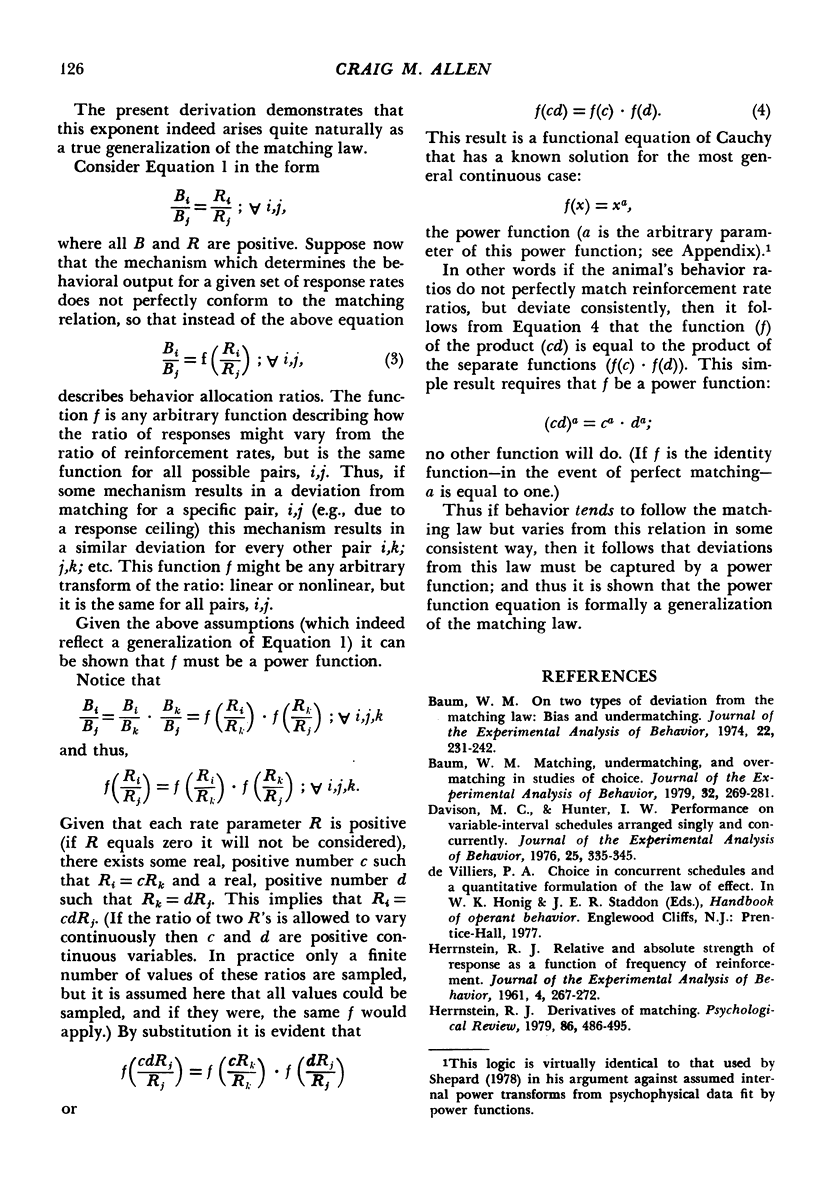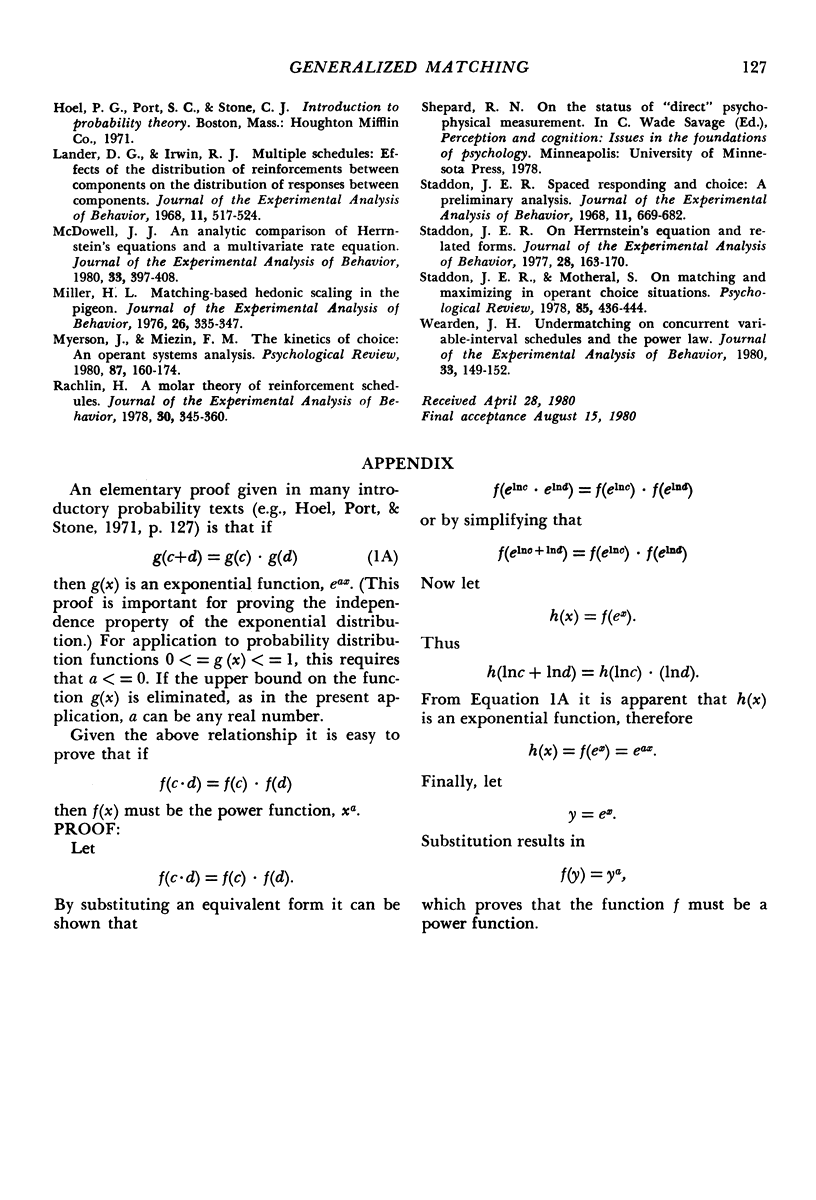Abstract
A power function equation between ratios of behavior and ratios of reinforcement rates has been called a generalized form of Herrnstein's (1961) matching law, even without a formal relationship having been shown between the two equations. The present work uses a functional relationship to prove that when ratios of reinforcement are not equivalent to ratios of behavior, and the transform leading to this inequality is consistent for every pair of reinforcement rates, the result is a power function relationship between response and reinforcement ratios. The label “generalized matching equation” for the power function equation is thus validated formally.
Keywords: matching equation, power function, reinforcement ratios
Full text
PDF


Selected References
These references are in PubMed. This may not be the complete list of references from this article.
- Baum W. M. Matching, undermatching, and overmatching in studies of choice. J Exp Anal Behav. 1979 Sep;32(2):269–281. doi: 10.1901/jeab.1979.32-269. [DOI] [PMC free article] [PubMed] [Google Scholar]
- Baum W. M. On two types of deviation from the matching law: bias and undermatching. J Exp Anal Behav. 1974 Jul;22(1):231–242. doi: 10.1901/jeab.1974.22-231. [DOI] [PMC free article] [PubMed] [Google Scholar]
- Davison M. C., Hunter I. W. Performance on variable-interval schedules arranged singly and concurrently. J Exp Anal Behav. 1976 May;25(3):335–345. doi: 10.1901/jeab.1976.25-335. [DOI] [PMC free article] [PubMed] [Google Scholar]
- HERRNSTEIN R. J. Relative and absolute strength of response as a function of frequency of reinforcement. J Exp Anal Behav. 1961 Jul;4:267–272. doi: 10.1901/jeab.1961.4-267. [DOI] [PMC free article] [PubMed] [Google Scholar]
- Lander D. G., Irwin R. J. Multiple schedules: effects of the distribution of reinforcements between component on the distribution of responses between conponents. J Exp Anal Behav. 1968 Sep;11(5):517–524. doi: 10.1901/jeab.1968.11-517. [DOI] [PMC free article] [PubMed] [Google Scholar]
- McDowell J. J. An analytic comparison of Herrnstein's equations and a multivariate rate equation. J Exp Anal Behav. 1980 May;33(3):397–408. doi: 10.1901/jeab.1980.33-397. [DOI] [PMC free article] [PubMed] [Google Scholar]
- Miller H. L. Matching-based hedonic scaling in the pigeon. J Exp Anal Behav. 1976 Nov;26(3):335–347. doi: 10.1901/jeab.1976.26-335. [DOI] [PMC free article] [PubMed] [Google Scholar]
- Rachlin H. A molar theory of reinforcement schedules. J Exp Anal Behav. 1978 Nov;30(3):345–360. doi: 10.1901/jeab.1978.30-345. [DOI] [PMC free article] [PubMed] [Google Scholar]
- Staddon J. E. On Herrnstein's equation and related forms. J Exp Anal Behav. 1977 Sep;28(2):163–170. doi: 10.1901/jeab.1977.28-163. [DOI] [PMC free article] [PubMed] [Google Scholar]
- Staddon J. E. Spaced responding and choice: a preliminary analysis. J Exp Anal Behav. 1968 Nov;11(6):669–682. doi: 10.1901/jeab.1968.11-669. [DOI] [PMC free article] [PubMed] [Google Scholar]
- Wearden J. H. Undermatching on concurrent variable-interval schedules and the power law. J Exp Anal Behav. 1980 Jan;33(1):149–152. doi: 10.1901/jeab.1980.33-149. [DOI] [PMC free article] [PubMed] [Google Scholar]


